Types of GearsGears are one of the widely used components in the field of mechanical engineering or machinery. Due to their mechanical benefits, they are employed throughout the industry to transfer power or speed to many mechanical devices or machines. Depending on the machines' type or structure, gears can also be made in different sizes to meet specific requirements. Therefore, it is essential to understand the difference between different gears that can help us choose the appropriate gear for various mechanical devices and equipment. This article discusses different types of gears, including their characteristics, functions, and mechanisms. Before discussing the different gear types, let us first understand the definition of gear and some typical applications. What is a Gear?A gear is a specific type of machine element in which multiple teeth are cut around cylindrical or cone-shaped surfaces at equal distances. By meshing two or more gears, they typically help transmit forces and rotations from the driving shaft to the driven shafts. The history of gears is considered to be very old. The use of gears is first believed to be in ancient times in Greece in B.C. Also, the signs of gear appear in the writings of Archimedes. 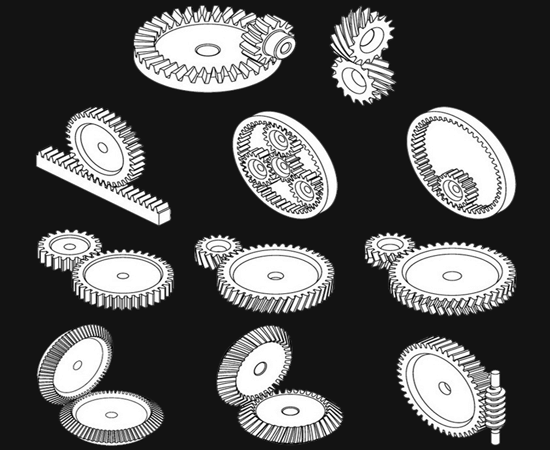
Applications of a GearGears are known as components of a rotating machine that transmit torque from the shaft to the shaft using mainly machined teeth. This eventually transmits power from the driving shaft to a powered shaft. Gears are in widespread use and have a lot of applications due to their mechanical characteristics. However, some of the most common applications are listed below:
Thus, gears are core components for most devices because they are versatile and capable of performing many operations. Types of GearsThere is a wide range of gears, and they can be classified in different ways based on different factors, such as their dimensions, structure, standard preference grade, allowable torque, tooth grinding requirement, etc. Each gear has its advantages and different behaviors. Some of the most common and widely used gears are listed below:
Let us now discuss each type in detail: What is Internal Gear?Internal gears typically have teeth cut inside of the cones, cylinders, or an annulus-shaped gear body. These types of gears are mainly used in an arrangement with external gears to transform motion. We can see the primary application of internal gears in planetary gear drives and various gear-type shaft couplings. Typically, these gears have three mechanisms, such as planetary, solar, and star. Internal gears are employed in most machines, either it is big or small and usually implemented as the reduction gears. They are best known for changing the gear ratios effectively in watches, bicycles, automatic transmission systems in vehicles, etc. A significant disadvantage in internal gears is the difference between the number of teeth in external and internal gears caused by a trimming problem and interference such as involute and trochoid. 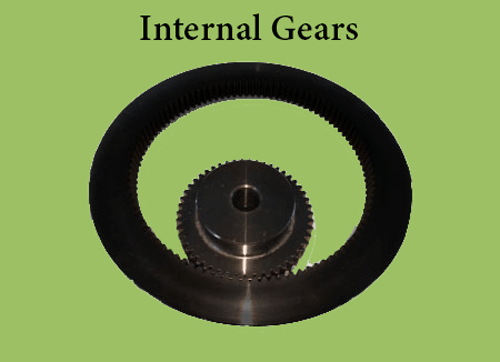
What is Spur Gear?Spur gears are categorized by their cylindrical shape with tooth lines straight and parallel to the shaft. These gears mainly transmit the power using parallel shafts. Moreover, these gears are reliable, easy to produce, and have widespread applications. These gears are technically best known for moderate speed and moderate load applications where noises and vibrations are not a concern. Generally, two different sizes of spur gears are used to manage torque and RPM accordingly. When these gears are in mesh, the larger one is called gear, while the smaller one is called the pinion. Since spur gears have cylindrical pitch surfaces, they do not bear load in the axial direction (thrust load). 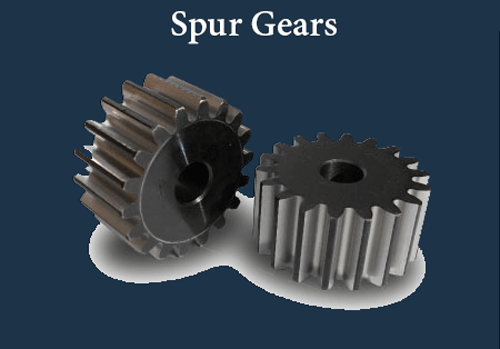
What is Helical Gear?Like Spur gears, the helical gears are also used with parallel shafts and are cylindrical. However, these gears contain winding tooth lines that allow better meshing and transmit higher loads without noise. The teeth in helical gears are angled so that if the teeth are extended, they may probably form a helix around the shaft. These gears are suitable for more than one pair in contact at a time, making them ideal for high-speed applications. Unlike spur gears, the helical gears produce axial loads, and therefore, they are generally supported using the thrust bearings. Helical gears are manufactured in single and double helical configurations. Single helical gears have a single row of angled teeth cut, while double-helical gears have two mirrored rows of angled teeth. 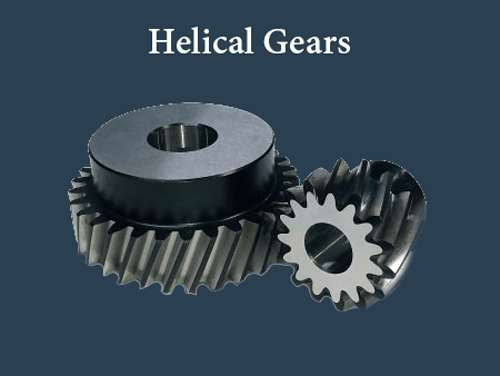
What is Herringbone Gear?Herringbone gears are almost identical to double helical gears. While helical gears have a groove between the teeth, herringbone gears do not. More specifically, these types of gears do not have any gap separating the two helical faces. Also, these gears are relatively small in size compared to double helical gears. When meshing, the power is usually transmitted from herringbone gears to a regular double helical gear. Herringbone gears are best known for the high amount of shock and vibration-based applications. Herringbone gears' design primarily helps eliminate axial forces on each set of teeth, allowing larger angles as there is less risk of failure. These gears typically use the intersecting axis configurations, and the two shafts remain perpendicular, respectively. The herringbone gear does not produce any axial thrust and ensures a quiet, smooth, and efficient operation at all speeds and loads. 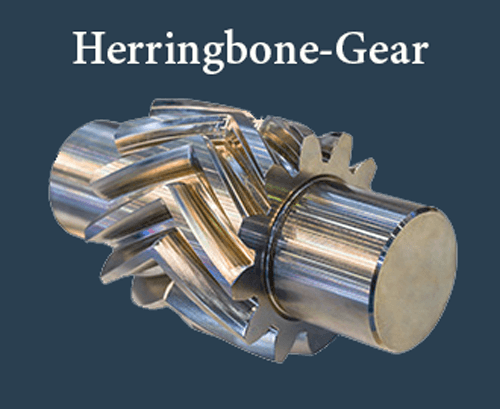
What is Bevel Gear?In terms of structure, bevel gears are cone-shaped gears. These gears consist of teeth along the conical surface. Most of these gears are used in applications where there is a need for a right angle gear drive or require changes to the rotation axis. Bevel gears typically help transmit the force between the shafts, which intersect at a 90° angle. However, they can also be configured with greater or lesser manageable angles. Some devices that use bevel gears are automobiles, pumps, machine tools (milling and turning), food packaging equipment, fluid control valves, and gardening equipment. One of the bevel gears' primary advantages is that the torque and RPM can be changed as desired by changing the gear sizes accordingly. Moreover, it is not compulsory for these gears that the two shafts are precisely perpendicular. Bevel gears are relatively costly and are not considered suitable as parallel shaft arrangements when transmitting more torque per size. There are many bevel gears, such as spiral, straight, zerol bevel gears, etc. 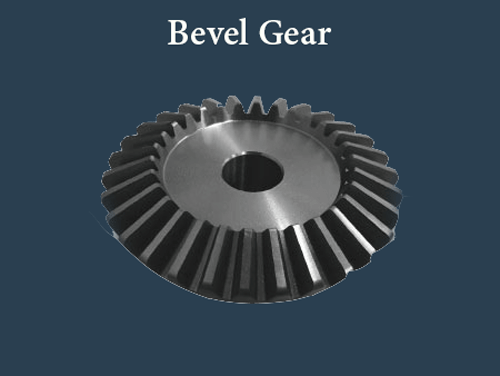
What is Worm Gear?Worm gears are constructed using two elements, such as worm and worm wheel. A worm is defined as the screw shape cut on a shaft, whereas the mating gear is the worm wheel. Both of these elements together on a non-intersecting shaft form a worm gear. Both worms and worm wheels do not always need to be in cylindrical shapes. Worm gears are mainly used in steering systems, automobiles, lifts, and material handling systems. One of the most significant advantages of worm gears is that one can lock their gear pair rotation as per requirements. This means that when worm gear is configured at any specific angle, it will not be changed automatically by the worm wheel. Thus, these are best known for applications that required a self-lock mechanism. Worm gears generate thrust loads and are best known for high shock load applications. However, they produce much lower efficiency than other gears. Because of this, these gears are often used in low horsepower applications. 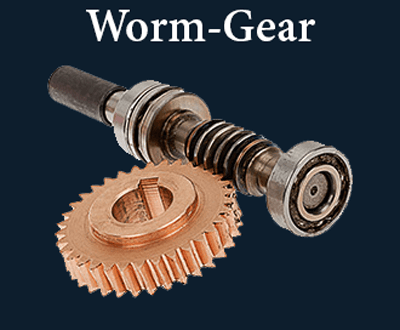
What is Hypoid Gear?Hypoid gears seem almost similar to spiral bevel gears in structure. However, they only operate on non-intersecting shafts. The shape of hypoid gears is also different from spiral bevel gears; hypoid gears have revolved hyperboloid-shaped bodies. The design of hypoid gears allows them to be in excellent contact when mating with other gears, which ultimately improves load-carrying capacity and the transmission system's durability. In the hypoid arrangement, the pinion is set on a different plane than the gear. Therefore, the shaft is supported by bearings at both ends. These gears are mainly used in automotive differential systems. Moreover, the meshing and the production of hypoid gears are complex. 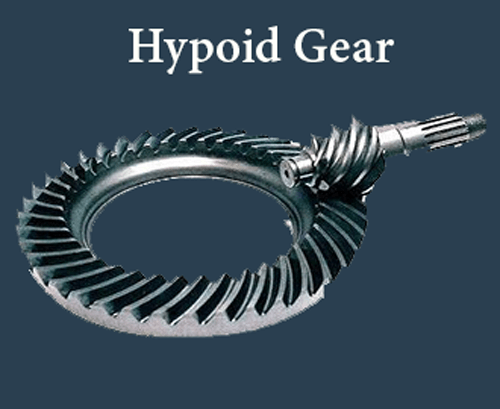
What is Mitre Gear?Mitre gears are a specific type of general bevel gears that have a speed ratio of 1:1. When operating, these gears are paired with the mitre gears that have the same number of teeth. They efficiently transmit the power between the intersecting angles. Furthermore, these gears are mainly used to change rotation direction without changing the shaft speed or torque. Miter gears are available in two different types, such as spiral and straight. Spiral mitre gears generate axial thrust, and therefore, it is necessary to use thrust bearings. Besides, straight mitre gears do not produce thrust force in an axial direction. However, they only come with a limitation of straight bevel gears. Mitre gears typically engage at the shaft angle of 90°. But they can be engaged at other shaft angles as well. In such a case, they are referred to as angular mitre gears. 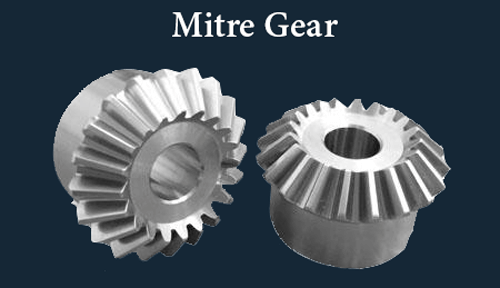
What is Screw Gear?Screw gears are also called the crossed helical gears. These gears are generally used to transmit the motion between such shafts that are non-parallel and not intersecting each other. As we discussed above, the helical gears typically engage between parallel shafts only. The screw gears do the same thing at the angle of 45° on non-parallel and non-intersecting shafts. The contact point in these types of gears is only a point. That is the reason the screw gears are not considered suitable for large power transmission. Apart from this, the sliding of the tooth surface is used to transmit the power. Therefore, it is essential to pay attention while using these gears. There is no restriction in combination with the number of teeth in the screw gears. 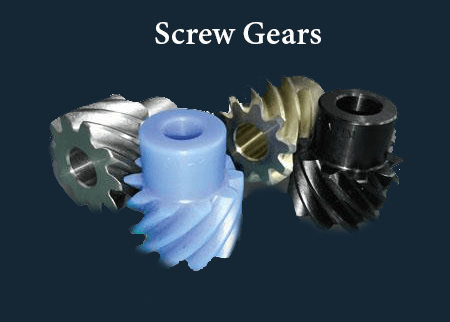
What is Gear Rack?A gear rack is a straight line rod or a flat surface with many same shaped and same sized teeth cut at equal distances. The gear rack operates with cylindrical gears, with a radius of the pitch being infinite. These gears with a rack mainly help to convert rotational motion to a linear motion. When meshing with cylindrical gears or pinion, gears' rotation usually pushes the rack in a straight line, converting rotational motion into linear motion. Gear racks are further sub-divided into helical tooth racks and straight tooth racks. However, both of these racks have straight tooth lines. By machining the gear rack's ends, they can help in arranging the gear rack end-to-end. 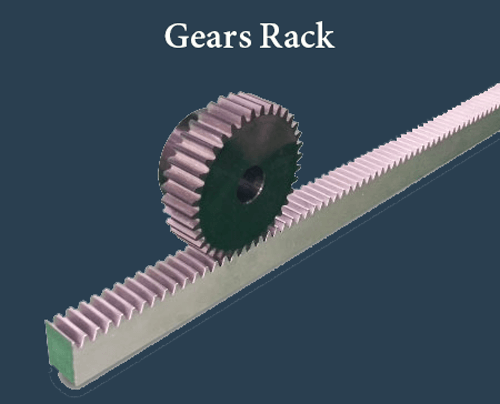
Classification of Gears based on Axes OrientationBy the orientation of their axes, gears are mainly classified into the following three categories:
Next TopicLife Processes MCQ
|
 For Videos Join Our Youtube Channel: Join Now
For Videos Join Our Youtube Channel: Join Now
Feedback
- Send your Feedback to [email protected]
Help Others, Please Share









